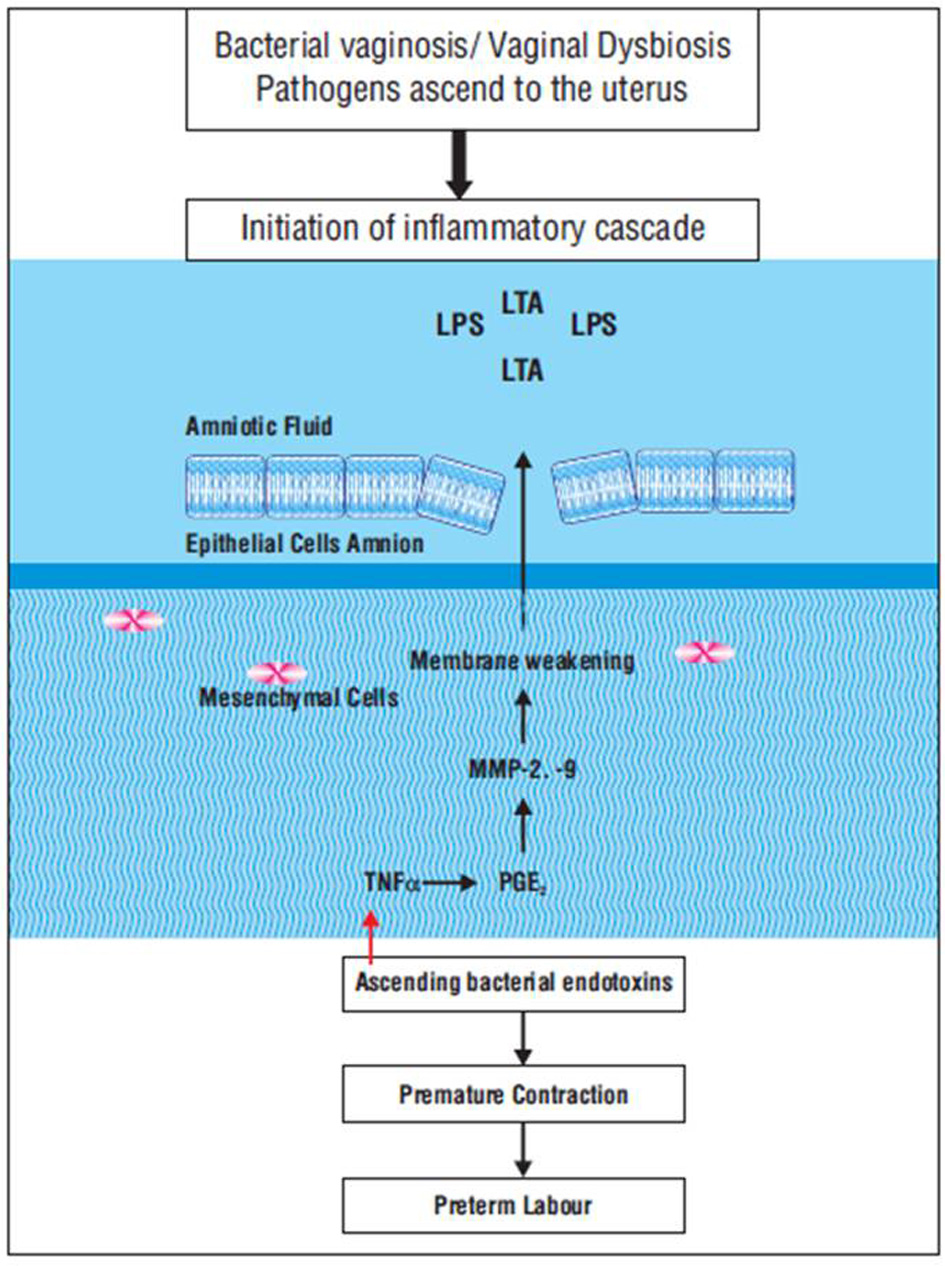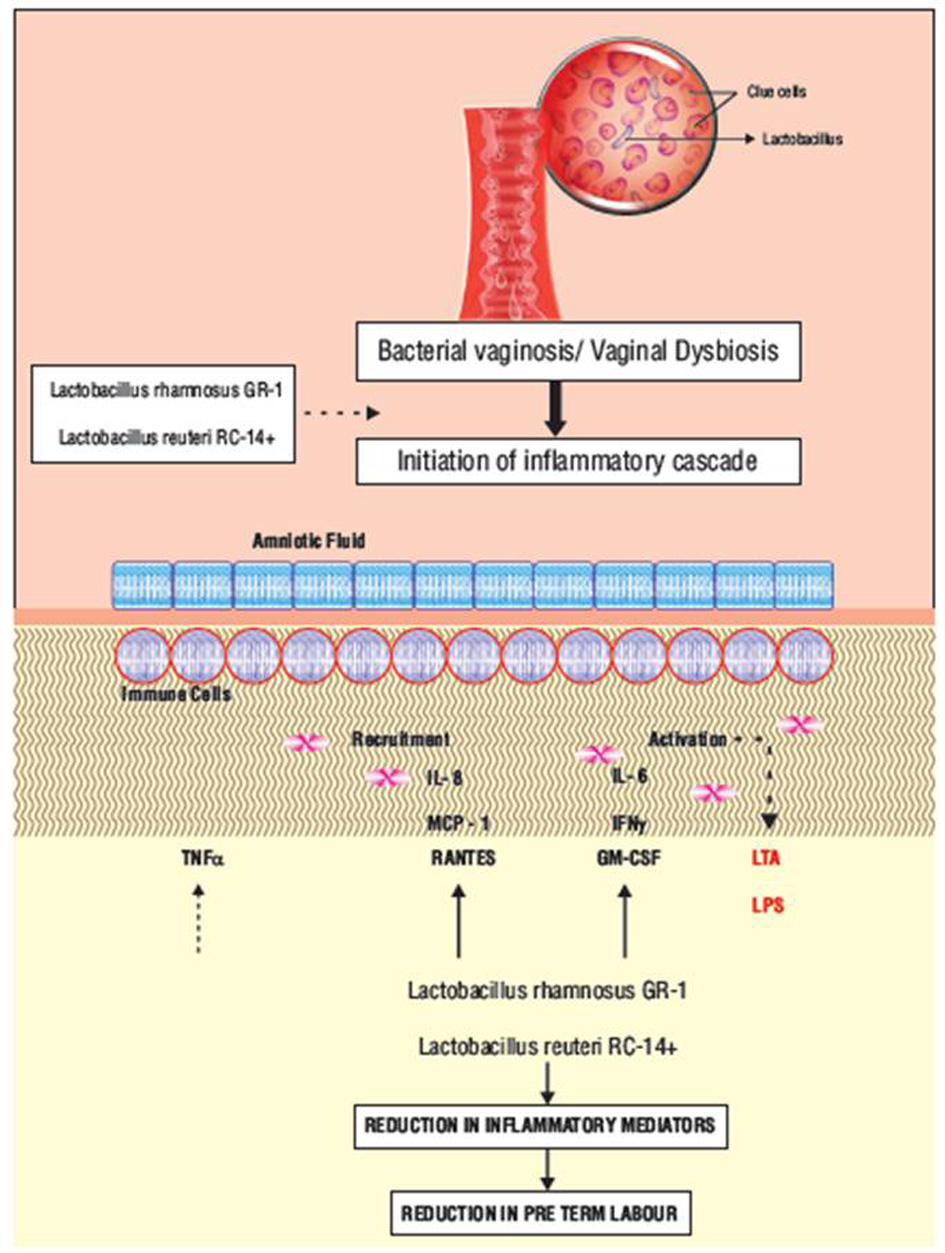
Figure 1. Pathogenesis of preterm birth. In bacterial vaginosis, pathogens ascending through vagina and cervix to uterus release bacterial proteolytic enzymes like phopholipase A2 and collagenase. This initiates the formation of arachidonic acid and increases the level of prostaglandins. Elevated prostaglandin levels induce collagen remodelling in the fetal membranes. This will eventually lead to uterine contraction and preterm labor.

Figure 2. Mechanism of action of Lactobacillus rhamnosus GR1 and Lactobacillus reuteri RC14+ in preventing preterm birth. Lactobacillus rhamnosus GR1 and Lactobacillus reuteri RC14+ enhance IL-10 and CSF3 production in human placental cells via JAK/STAT and MAPK pathways, and down-regulate LPS-induced TNFα output through JNK inhibition. Lactobacilli also increase the expression of prostaglandin-metabolizing enzymes and reduce prostaglandin levels therefore preventing preterm birth. CSF3: colony stimulating factor 3; JNK: c-Jun-N-terminal kinase; IL: interleukin; JAK/STAT: Janus kinase/signal transducers and activators of transcription; MAPK: mitogen-activated protein kinase; LPS: lipopolysaccharide; TNFα: tumor necrosis factor α.

